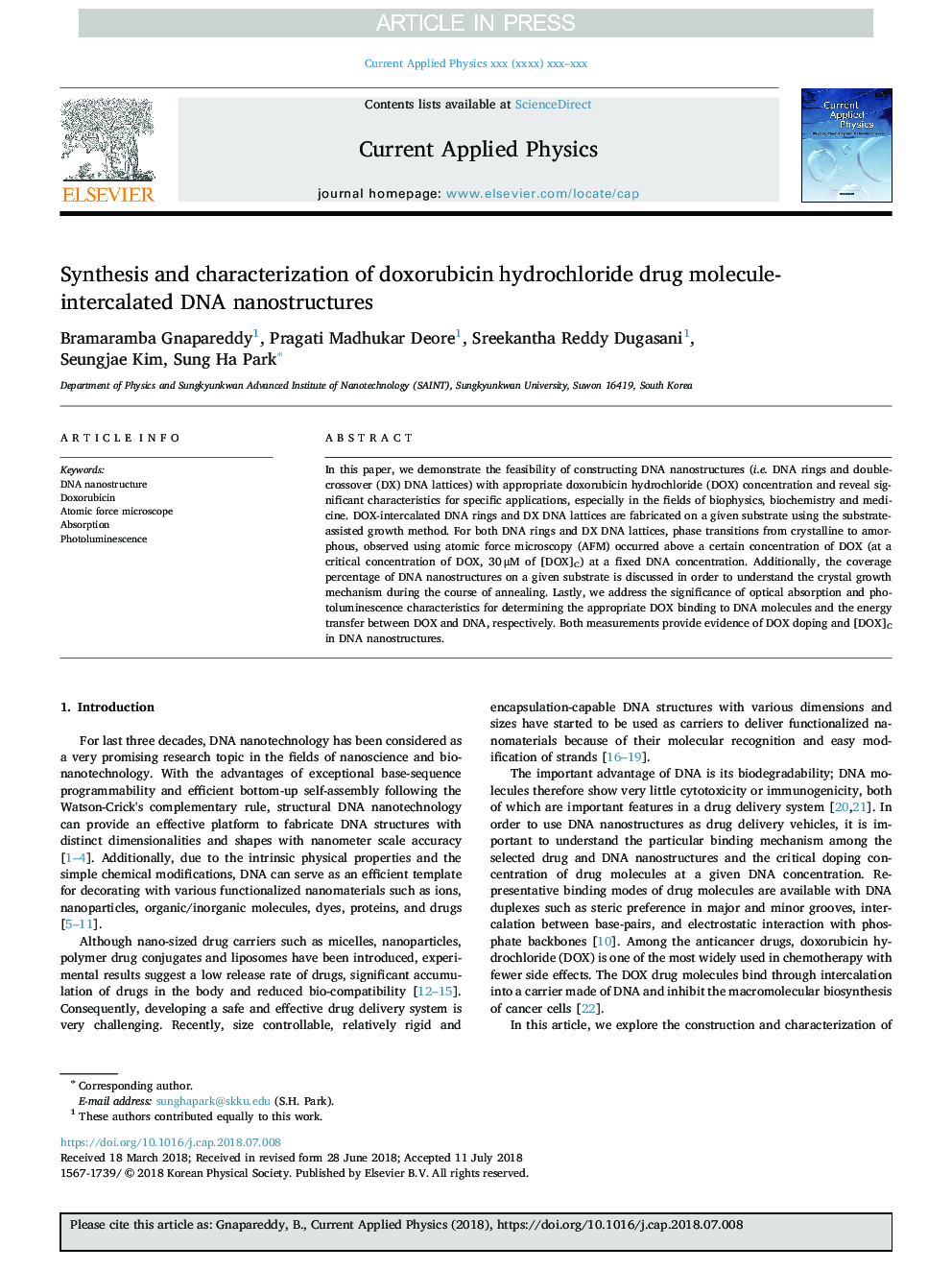| Article ID | Journal | Published Year | Pages | File Type |
|---|---|---|---|---|
| 11008830 | Current Applied Physics | 2018 | 6 Pages |
Abstract
In this paper, we demonstrate the feasibility of constructing DNA nanostructures (i.e. DNA rings and double-crossover (DX) DNA lattices) with appropriate doxorubicin hydrochloride (DOX) concentration and reveal significant characteristics for specific applications, especially in the fields of biophysics, biochemistry and medicine. DOX-intercalated DNA rings and DX DNA lattices are fabricated on a given substrate using the substrate-assisted growth method. For both DNA rings and DX DNA lattices, phase transitions from crystalline to amorphous, observed using atomic force microscopy (AFM) occurred above a certain concentration of DOX (at a critical concentration of DOX, 30â¯Î¼M of [DOX]C) at a fixed DNA concentration. Additionally, the coverage percentage of DNA nanostructures on a given substrate is discussed in order to understand the crystal growth mechanism during the course of annealing. Lastly, we address the significance of optical absorption and photoluminescence characteristics for determining the appropriate DOX binding to DNA molecules and the energy transfer between DOX and DNA, respectively. Both measurements provide evidence of DOX doping and [DOX]C in DNA nanostructures.
Related Topics
Physical Sciences and Engineering
Physics and Astronomy
Condensed Matter Physics
Authors
Bramaramba Gnapareddy, Pragati Madhukar Deore, Sreekantha Reddy Dugasani, Seungjae Kim, Sung Ha Park,
